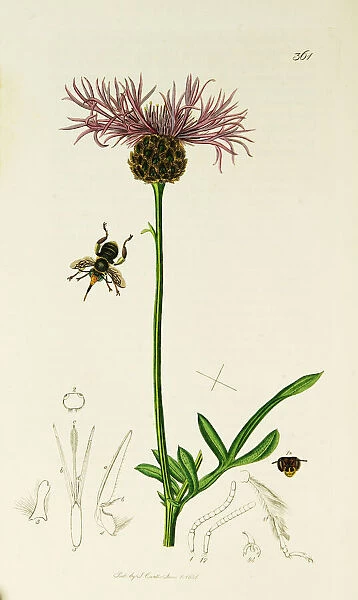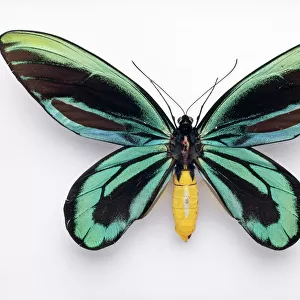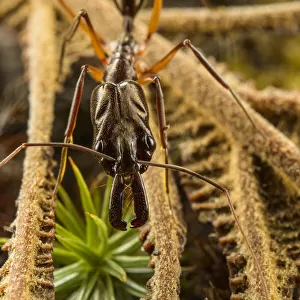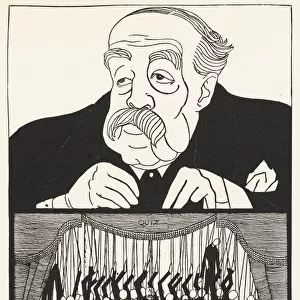Home > Animals > Insects > Butterflies > Related Images
Curtis British Entomology Plate 361
![]()

Wall Art and Photo Gifts from Mary Evans Picture Library
Curtis British Entomology Plate 361
Hymenoptera: Saropoda bimaculata = Anthophora bimaculata (Two-spotted Saropoda) [Plant: Centaurea scabiosa (Great Knapweed)] Date: 1824-39
Mary Evans Picture Library makes available wonderful images created for people to enjoy over the centuries
Media ID 23039400
© The Robin Symington Collection/Mary Evans Picture Library
1820s 1830s Butterflies Butterfly Centaurea Curtis Entomology Hymenoptera Knapweed Ledipotera Scabiosa
FEATURES IN THESE COLLECTIONS
> Animals
> Insects
> Butterflies
> Related Images
> Animals
> Insects
> Hymenoptera
> Related Images
> Mary Evans Prints Online
> New Images August 2021
EDITORS COMMENTS
This image is taken from Curtis's British Entomology, Plate 361, featuring the Two-spotted Saropoda, scientifically known as Saropoda bimaculata or Anthophora bimaculata. The Hymenopteran insect, a member of the family Sparagiformicidae within the order Hymenoptera, is depicted in intricate detail, showcasing its distinctive two black spots on its otherwise yellow abdomen. The Two-spotted Saropoda is a solitary, ground-nesting bee, which is essential for the pollination of various flowers. The plant in the background is identified as Centaurea scabiosa, commonly known as Great Knapweed. This plant, belonging to the family Asteraceae, is native to Europe and Asia and is characterized by its distinctive blue-purple flowers and prickly leaves. This beautiful entomological plate is a testament to the exquisite illustrative skills of the 19th century. It was produced during the 1820s and 1830s by the renowned botanical artist John Curtis, FLS, who is known for his meticulous and accurate depictions of various insects and plants. The plate is part of the extensive collection of Curtis's British Entomology, which documents a wide range of insects found in Britain during that era. The intricate details of the Two-spotted Saropoda and the Great Knapweed, as depicted in this plate, offer a glimpse into the rich natural history of the 19th century. The delicate balance between the bee and its host plant highlights the interconnectedness of various organisms within the natural world, making this image an essential addition to any collection of historical natural history records.
MADE IN THE UK
Safe Shipping with 30 Day Money Back Guarantee
FREE PERSONALISATION*
We are proud to offer a range of customisation features including Personalised Captions, Color Filters and Picture Zoom Tools
SECURE PAYMENTS
We happily accept a wide range of payment options so you can pay for the things you need in the way that is most convenient for you
* Options may vary by product and licensing agreement. Zoomed Pictures can be adjusted in the Basket.





